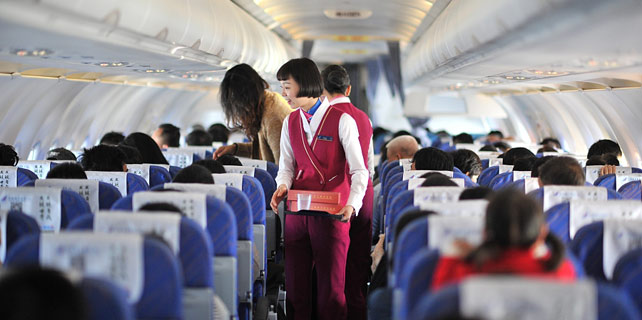Co-living rental gains popularity
 |
|
A couple lives in an apartment in Shanghai, March 11, 2017. [Photo/Xinhua] |
Real estate giant Vanke plans to create 150,000 units for residents by 2019
Two-year old Harbour Apartments, a network of co-living spaces for young tenants in China's first-tier cities, has successfully raised 400 million yuan ($60.9 million) in its A-round funding, becoming one of the first long-term rental projects to win favor on the market.
The apartment units it offers can be rented from a price range of 3,000 yuan per month to 20,000 a month.
The latest investment into long-term residential rental projects follows China's efforts to boost the supply of rental housing and cool down rapidly growing home prices in some cities, investors said.
Increasing supplies for rental projects is a long-term solution to resolve the overheating real estate market problem, according to recent government circulars launching policies to encourage development of the rental market in more than a dozen cities.
Investors said that market demand for quality rental projects is huge as China's population is more mobile than ever.
"China's robust new economy has created unique opportunities for us. Millennials and the middle class in China tend to be tech savvy, more sociable and are looking for a sense of belonging and adventure in big cities," said Humbert Pang, managing principal and head of Gaw Capital Partners China, which invested in Harbour Apartments.
These changes have made co-living spaces an ideal form of accommodation in the era of the "sharing" economy, Pang said.
Besides rental apartment platforms such as Harbour Apartments, some developers have also launched their own co-living rental projects.
China Vanke and Longfor Properties, two of China's largest developers, have introduced their respective long-term rental projects targeting young tenants. Vanke plans to create 150,000 rental units by 2019, and Longfor is to add 30,000 units in the next two years.
Several smaller brands, usually asset-light operators of rental projects across China, have surged in the past year. According to data of E-house China R&D Institute, more than 50 brands of rental projects are operating in some 20 cities across China.
In these projects, the space of each unit may range from 40 square meters for a single resident en-suite to more than 100 square meters for two-bedroom family apartments. The buildings also feature public spaces for social life, such as gyms, reading rooms and lobby lounges.
"For young tenants, good housing conditions go beyond good location, maintenance and operation quality. The community life should also be active," said Xu Aijuan, operation specialist in Qingju Shequ, a co-living community in Nanjing.
"Projects should target the niche market and offer a wide range of products to avoid homogenization in the market," said Chen Fangyong, secretary general of China Urban Regeneration Forum and a real estate expert.






















